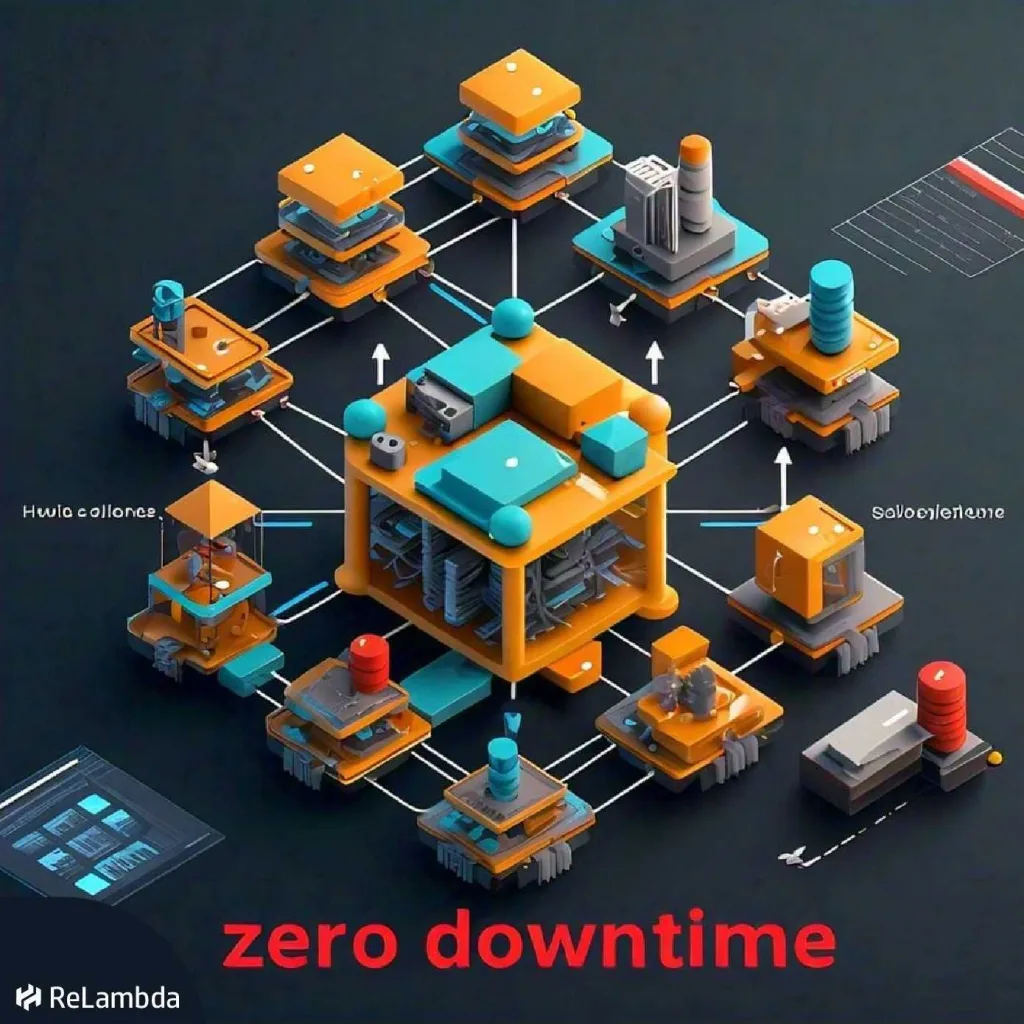Best Practices in Kubernetes
Kubernetes has become a game-changer in modern application deployment and management. Its ability to automate tasks such as container orchestration, scaling, and recovery makes it essential for building flexible cloud infrastructure. However, to fully unlock its potential, understanding and implementing Kubernetes best practices is crucial. Here’s a guide to help you navigate and maximize its use:
1. Design for Scalability and Resilience
Embrace Microservices: Transition from monolithic applications to microservices. This approach decomposes your application into smaller, independent services that can be scaled individually, improving flexibility, fault tolerance, and ease of maintenance.
Horizontal Pod Autoscaling (HPA): Utilize HPA to automatically scale your pods based on resource usage such as CPU and memory or custom metrics. This ensures that your app can handle varying workloads without manual intervention.
Cluster Autoscaling: Dynamically adjust the number of nodes in your Kubernetes cluster in response to changes in workload demand. This helps optimize resource utilization and minimizes operational costs.
2. Optimize Resource Allocation
Set Resource Requests and Limits: Define precise resource requests and limits for your containers to prevent contention and ensure optimal performance. This allows Kubernetes to allocate the necessary resources while avoiding overuse.
Leverage Quality of Service (QoS): Kubernetes assigns QoS classes to prioritize critical workloads. This ensures that essential applications always have the resources they need, even during peak traffic.
3. Organize Using Namespaces
Logical Isolation with Namespaces: Use namespaces to logically separate resources within your cluster. This segmentation helps you isolate workloads by team, environment, or application, simplifying management.
Set Resource Quotas: By defining resource quotas at the namespace level, you can control the amount of CPU, memory, and storage each namespace can consume, preventing resource hogging by any single team or application.
4. Enhance Security Measures
Implement RBAC (Role-Based Access Control): RBAC ensures that users and services only have the minimum required permissions to perform their tasks, reducing the risk of unauthorized access.
Define Network Policies: Network policies help control traffic between pods, ensuring that only authorized services can communicate. This limits the attack surface and enhances security.
Secure Sensitive Data with Kubernetes Secrets: Kubernetes provides a mechanism for storing sensitive information like passwords, API keys, and tokens securely, preventing exposure in your application code.
Ensure Container Image Security: Regularly scan your container images for vulnerabilities to avoid security risks and ensure that only trusted, up-to-date images are used in your deployments.
5. Utilize Helm for Simplified Application Management
Manage Applications with Helm Charts: Helm makes it easy to package and deploy applications in Kubernetes. By using Helm charts, you can version, manage, and deploy applications with ease, reducing complexity.
Track Configuration Changes with Version Control: Utilize Git to manage your Kubernetes configurations and application code. This enables tracking of changes and allows for easy rollbacks when necessary.
Manage Configurations Across Environments: Use Helm’s values files to manage different configurations for various environments (development, staging, production), making deployments more consistent and repeatable.
6. Monitoring, Logging, and Observability
Collect Metrics with Prometheus: Prometheus is an open-source monitoring tool that collects metrics from your Kubernetes cluster. Combine it with Grafana for powerful visualizations, making it easier to monitor application performance.
Centralized Logging with the ELK Stack or Fluentd: Gather logs from all containers in your cluster and centralize them using tools like Elasticsearch, Logstash, and Kibana (ELK Stack) or Fluentd. This approach helps with troubleshooting and maintaining observability.
Implement Distributed Tracing: Tools like Jaeger or OpenTelemetry can trace requests as they flow through multiple services, helping you detect bottlenecks and optimize system performance.
7. Automate with CI/CD Pipelines
Streamline Deployment with CI/CD: Automate the build, test, and deployment process using CI/CD tools like Jenkins, GitLab CI/CD, or Tekton Pipelines. This not only accelerates the release process but also ensures more reliable deployments.
Adopt GitOps for Infrastructure Management: With GitOps, use Git repositories as the source of truth for infrastructure and application configurations. Any changes pushed to Git can trigger automatic deployments, simplifying operations and increasing consistency.
8. Plan for Disaster Recovery
Implement Regular Backups: Regularly back up your critical Kubernetes components, including etcd (the key-value store) and persistent volumes. This ensures that you can quickly recover from failures.
Test Disaster Recovery Procedures: Conduct routine disaster recovery drills to test your ability to recover from infrastructure failures. These exercises ensure that your team is prepared for emergencies.
Distribute Workloads Across Multiple Clusters: Improve fault tolerance and availability by deploying your workloads across multiple Kubernetes clusters. This minimizes the risk of downtime if one cluster becomes unavailable.
By applying these best practices, you can build a Kubernetes-based infrastructure that is highly scalable, secure, and resilient. Kubernetes offers immense potential, but realizing its full benefits requires careful planning, proactive monitoring, and consistent best practice implementation.Kubernetes has become a game-changer in modern application deployment and management. Its ability to automate tasks such as container orchestration, scaling, and recovery makes it essential for building flexible cloud infrastructure. However, to fully unlock its potential, understanding and implementing Kubernetes best practices is crucial. Here’s a guide to help you navigate and maximize its use:
1. Design for Scalability and Resilience
Embrace Microservices: Transition from monolithic applications to microservices. This approach decomposes your application into smaller, independent services that can be scaled individually, improving flexibility, fault tolerance, and ease of maintenance.
Horizontal Pod Autoscaling (HPA): Utilize HPA to automatically scale your pods based on resource usage such as CPU and memory or custom metrics. This ensures that your app can handle varying workloads without manual intervention.
Cluster Autoscaling: Dynamically adjust the number of nodes in your Kubernetes cluster in response to changes in workload demand. This helps optimize resource utilization and minimizes operational costs.
2. Optimize Resource Allocation
Set Resource Requests and Limits: Define precise resource requests and limits for your containers to prevent contention and ensure optimal performance. This allows Kubernetes to allocate the necessary resources while avoiding overuse.
Leverage Quality of Service (QoS): Kubernetes assigns QoS classes to prioritize critical workloads. This ensures that essential applications always have the resources they need, even during peak traffic.
3. Organize Using Namespaces
Logical Isolation with Namespaces: Use namespaces to logically separate resources within your cluster. This segmentation helps you isolate workloads by team, environment, or application, simplifying management.
Set Resource Quotas: By defining resource quotas at the namespace level, you can control the amount of CPU, memory, and storage each namespace can consume, preventing resource hogging by any single team or application.
4. Enhance Security Measures
Implement RBAC (Role-Based Access Control): RBAC ensures that users and services only have the minimum required permissions to perform their tasks, reducing the risk of unauthorized access.
Define Network Policies: Network policies help control traffic between pods, ensuring that only authorized services can communicate. This limits the attack surface and enhances security.
Secure Sensitive Data with Kubernetes Secrets: Kubernetes provides a mechanism for storing sensitive information like passwords, API keys, and tokens securely, preventing exposure in your application code.
Ensure Container Image Security: Regularly scan your container images for vulnerabilities to avoid security risks and ensure that only trusted, up-to-date images are used in your deployments.
5. Utilize Helm for Simplified Application Management
Manage Applications with Helm Charts: Helm makes it easy to package and deploy applications in Kubernetes. By using Helm charts, you can version, manage, and deploy applications with ease, reducing complexity.
Track Configuration Changes with Version Control: Utilize Git to manage your Kubernetes configurations and application code. This enables tracking of changes and allows for easy rollbacks when necessary.
Manage Configurations Across Environments: Use Helm’s values files to manage different configurations for various environments (development, staging, production), making deployments more consistent and repeatable.
6. Monitoring, Logging, and Observability
Collect Metrics with Prometheus: Prometheus is an open-source monitoring tool that collects metrics from your Kubernetes cluster. Combine it with Grafana for powerful visualizations, making it easier to monitor application performance.
Centralized Logging with the ELK Stack or Fluentd: Gather logs from all containers in your cluster and centralize them using tools like Elasticsearch, Logstash, and Kibana (ELK Stack) or Fluentd. This approach helps with troubleshooting and maintaining observability.
Implement Distributed Tracing: Tools like Jaeger or OpenTelemetry can trace requests as they flow through multiple services, helping you detect bottlenecks and optimize system performance.
7. Automate with CI/CD Pipelines
Streamline Deployment with CI/CD: Automate the build, test, and deployment process using CI/CD tools like Jenkins, GitLab CI/CD, or Tekton Pipelines. This not only accelerates the release process but also ensures more reliable deployments.
Adopt GitOps for Infrastructure Management: With GitOps, use Git repositories as the source of truth for infrastructure and application configurations. Any changes pushed to Git can trigger automatic deployments, simplifying operations and increasing consistency.
8. Plan for Disaster Recovery
Implement Regular Backups: Regularly back up your critical Kubernetes components, including etcd (the key-value store) and persistent volumes. This ensures that you can quickly recover from failures.
Test Disaster Recovery Procedures: Conduct routine disaster recovery drills to test your ability to recover from infrastructure failures. These exercises ensure that your team is prepared for emergencies.
Distribute Workloads Across Multiple Clusters: Improve fault tolerance and availability by deploying your workloads across multiple Kubernetes clusters. This minimizes the risk of downtime if one cluster becomes unavailable.
By applying these best practices, you can build a Kubernetes-based infrastructure that is highly scalable, secure, and resilient. Kubernetes offers immense potential, but realizing its full benefits requires careful planning, proactive monitoring, and consistent best practice implementation.


